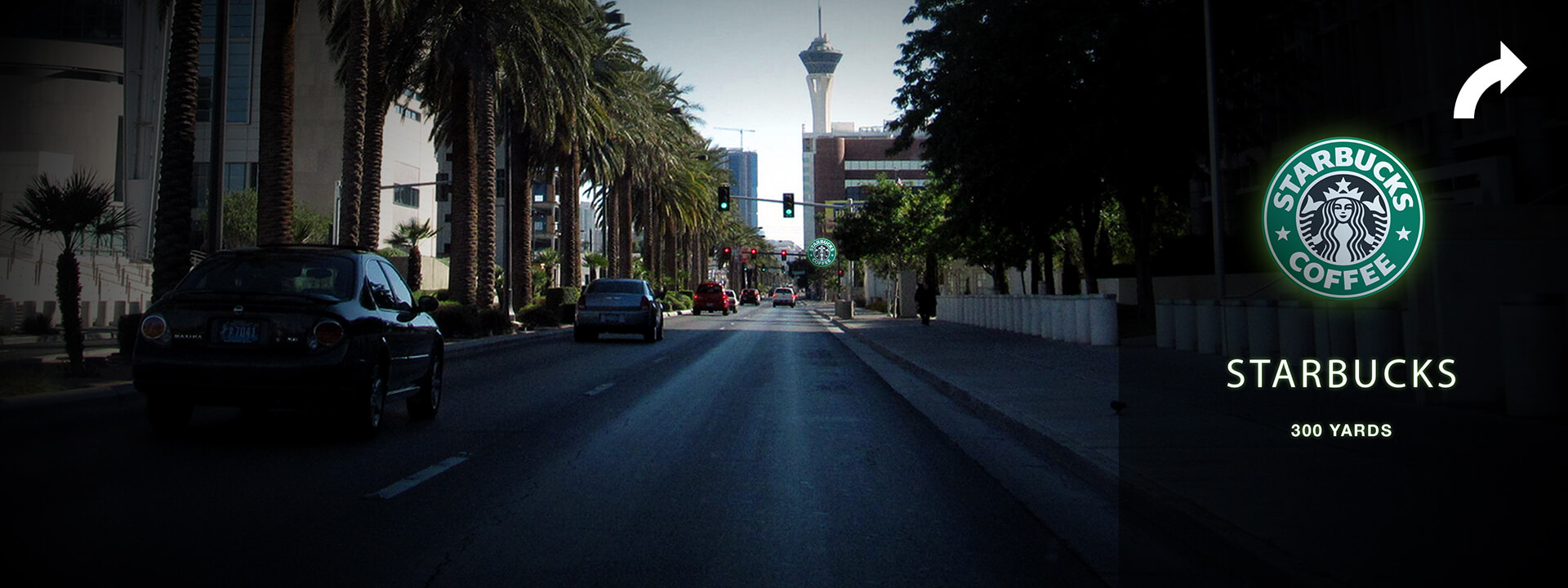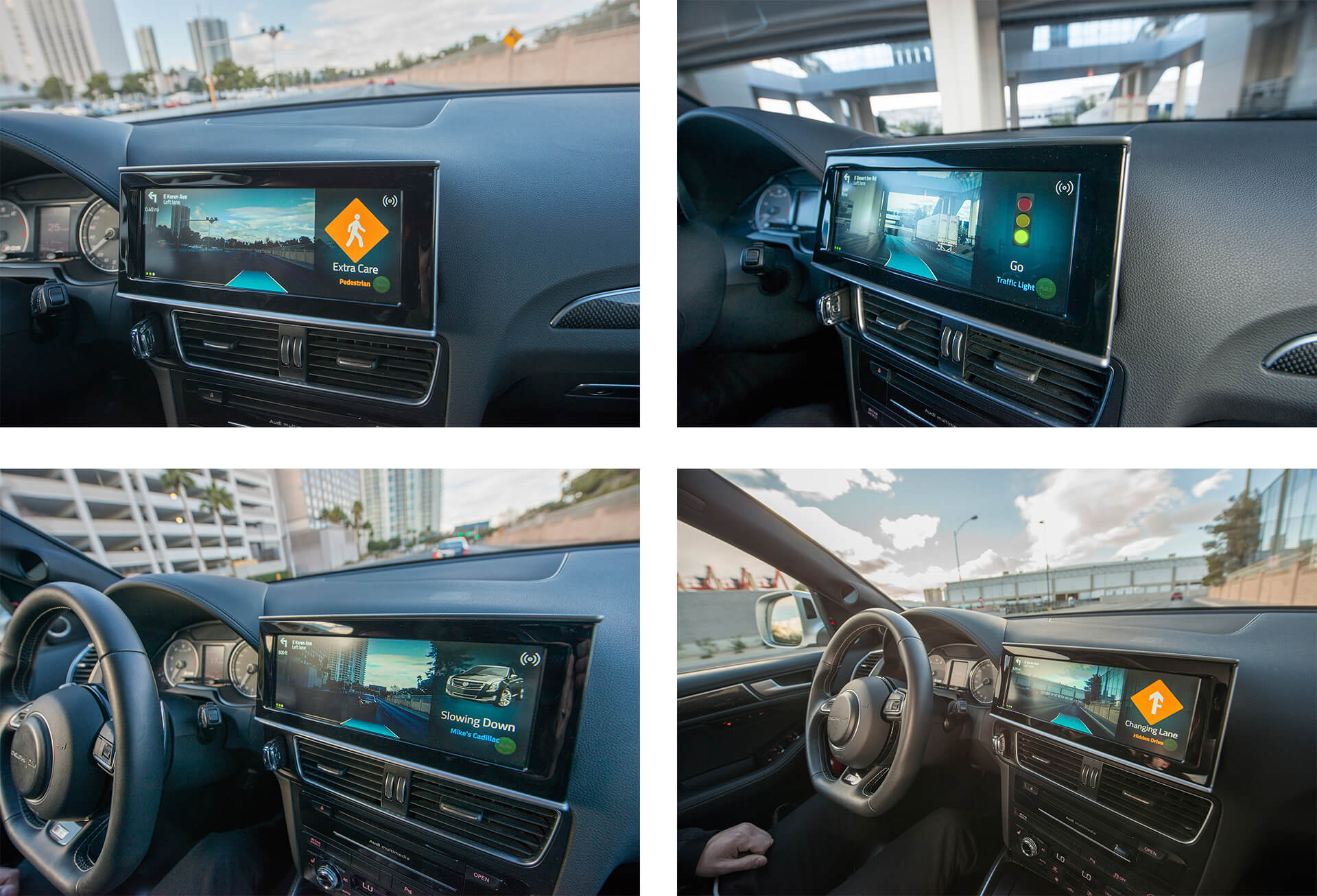Demonstrating the Connected Car Concept

Delphi Automotive—one of the world’s largest automotive manufacturers—has pioneered some of the most innovative technologies of the past two decades. The company famously introduced an autonomous concept car that drove itself 3,000 miles across the U.S., putting Delphi at the heart of this flourishing sector.
In 2015, Delphi selected us to help develop and showcase their groundbreaking autonomous technology in a compelling demo, which was presented at CES in Las Vegas.
Opportunity
Demonstrate Delphi’s autonomous car concept in a meaningful and human way—making something that seems futuristic actually quite possible (and perhaps right around the corner)—today.
Outcome
An exciting demo that highlights the self-driving car’s ability to naturally assist people by seamlessly integrating technology and devices we use every day.
The guiding principle for our interface development and user experience was trust. It was essential that people felt safe while allowing the car to be the driver. We needed to create confidence in the car’s ability to process its environment and make quick decisions about what to do next.

Designing for comfort
Working closely with Delphi, we introduced a “Vehicle to Everything” (V2E) experience that featured the car’s ability to communicate precisely with its surroundings, including traffic lights, surrounding cars and pedestrians. We designed, tested and developed in the moving vehicle itself in order to craft and tune an experience that felt natural in people’s day-to-day.

The guiding principle for our interface development and user experience was trust. It was essential that people felt safe allowing the car to be the driver and we needed to create confidence in the car’s ability to process its environment and make quick decisions about what to do next.
We designed and demonstrated safety features that were responsive and transparent, so that drivers could feel in control even when they gave up the wheel. The vehicle’s built-in sensors enabled the car to recognize high-risk scenarios based on connected road signs and vehicles, then communicated and made pre-emptive maneuvers like lane changes and speed adjustments.
Loading....
Integrating the everyday
Trust meant demonstrating an understanding that an autonomous car was just another point that fits seamlessly into a person’s digital ecosystem. We enabled connected communication among devices—from tablets to wearables—to illustrate how gadgets can fully integrate into and enhance the on-road experience.
With the needs of both the driver and passengers in mind, we tested numerous scenarios to actualize a human-centered experience of V2E’s capabilities.
For the driver who was away from the vehicle, we used the Apple Watch to provide notifications for upcoming events, show where the car was parked, and estimate drive time based on traffic.

Passengers’ tablets—which could also be wirelessly connected to the car—showed points of interest along the planned route. They could even add a coffee stop to their route and receive feedback if doing so would put them behind schedule. With every new point of interest, the drive time and route map automatically updated to keep the driver and passengers informed in real time.
In self-driving mode, the car’s head unit displayed the vehicle’s next move visually in a subtle, non-disruptive way—and through audio and haptics for more critical alerts. We were mindful of the tone, timing and necessity of the messages, which helped us establish a safe and natural atmosphere. Rather than strive for surprises, we emphasized the ease and personalized assistance that autonomous mobility provides.

Ready for the world
The V2E concept demonstrated how Delphi’s autonomous car technology can enhance daily life with its safety features, smart awareness and rider-friendly drive experiences via connected personal devices. Delphi’s memorable and meaningful vision for the near future confirmed that self-driving cars are indeed ready for people to embrace today.



